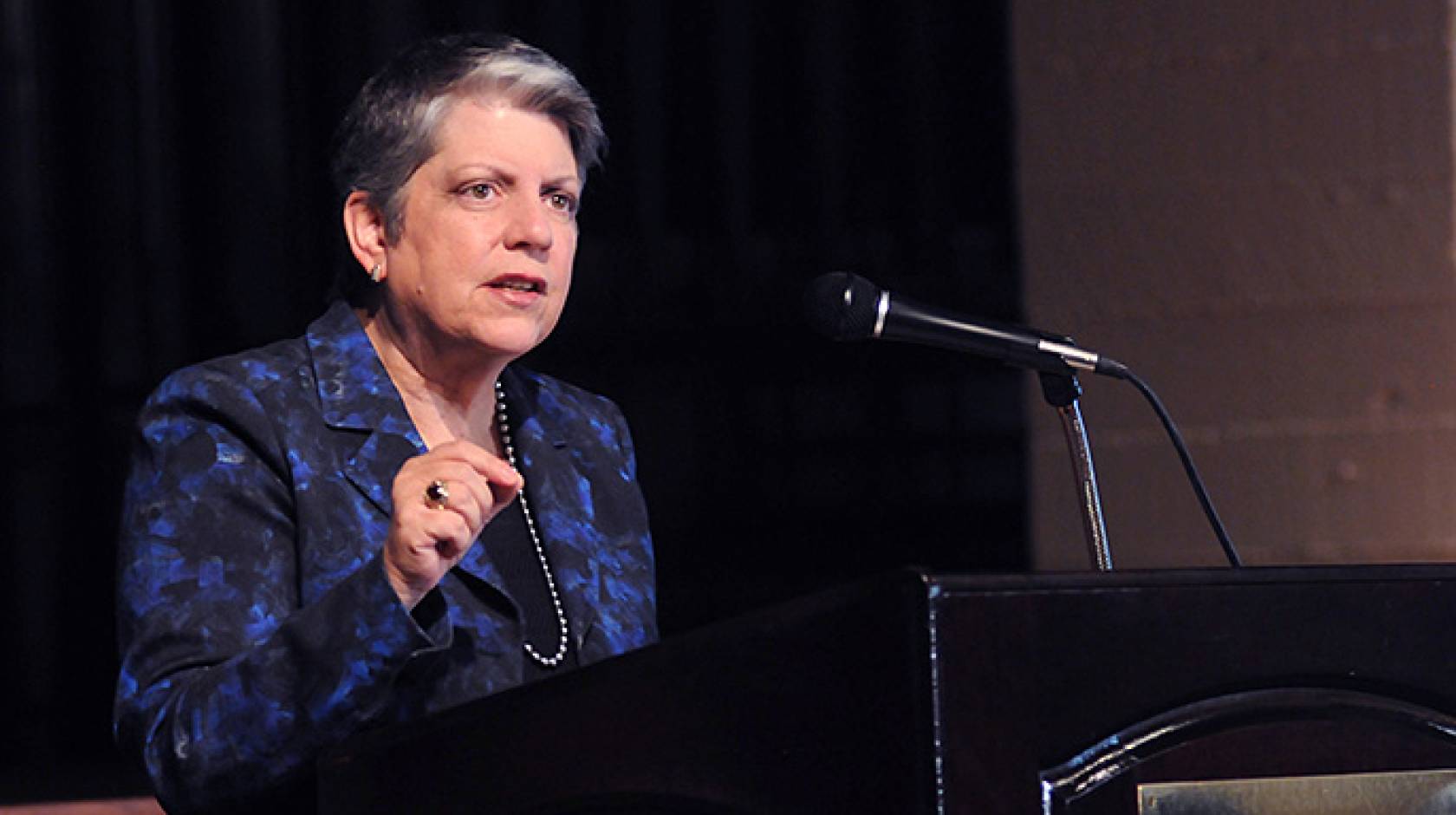James Grant, UC Riverside

Talking to business and civic leaders at the historic Mission Inn, UC President Janet Napolitano today (April 9) addressed myths about UC system financing as she spoke fondly of the Riverside community and campus.
“There are myths about basic research — about how much basic research costs, or about its purported irrelevance to the university,” she said. Napolitano then cited several examples of the direct way UC research — including the work of UCR faculty — has improved the lives of Californians.
“It was a biologist just down the road at UC Riverside who discovered that plants produce a stress hormone in times of drought,” she said. “His name is [UCR cell biologist] Dr. Sean Cutler, and thanks to him, we now know how to improve the growth of plants despite extreme drought conditions, like those in which our state now finds itself.”
Addressing the myth of who foots the bill for the UC student body, Napolitano noted that UC is now home to more than 235,000 students, and that nearly 90 percent of the undergraduates in the system are from California.
Moreover, she said, “Fifty-five percent of our California resident undergraduates pay no tuition at all,” thanks to the UC Blue and Gold Opportunity Plan, which provides full coverage of tuition for families who earn $80,000 or less in annual income.
Napolitano also dispelled myths about UC’s budget. She noted that about 75 percent of the annual $26.7 billion budget is accounted for by restricted private donations, federal research project funding, and medical center revenue — leaving a core operating budget of about $6.9 billion.
This base, she said, is comprised primarily of only two variables — state appropriations and tuition.
“When the state slashed $1 billion from the university’s budget during the recession, that cut was a huge, impactful one. It reduced by a third the state’s contribution to our core budget,” said Napolitano.
“Put another way, the state now provides the exact amount of dollars to UC as it did in 1997. Meanwhile, UC has enrolled 75,000 additional students — the equivalent of adding three more UC Riverside campuses.”
Last November, the UC Regents approved a five-year funding plan that authorizes the university to increase tuition by as much as 5 percent annually beginning in fall if the state cannot provide an additional $100 million annually.
Napolitano spoke to about 300 members and guests of the Greater Riverside Chambers of Commerce “Good Morning, Riverside” breakfast meeting, then later met privately with UCR Chancellor Kim A. Wilcox and about a dozen local business, civic and education leaders.
In her remarks, Napolitano recalled her first visit to the UCR campus, in November 2013, when she took a tour of the mosquito research laboratory run by Anandasankar Ray, the Neil A. Campbell Science Learning Laboratory headed by Susan Wessler, attended a poetry class along with former California Poet Laureate Juan Felipe Herrera, and lunched with student leaders. “There’s a reason the University of California is held up as a world model and marvel,” said Napolitano.
“It’s not a stretch to say what California has done is create the Ivy League of the West, but a public, not a private one. Along the way, this symbiosis evolved cities like Riverside and Irvine into university towns.”
Kevin Torres-Dominguez is the kind of student President Napolitano is asking the state of California to support. The Ramona High School senior is salutatorian of his class, works with Habitat for Humanity and the Riverside Community Foundation Youth Grantmakers, and plans to enroll in UC Riverside this fall to study for a career in the health sciences. Torres-Dominguez was honored at the event by Riverside Unified School District Superintendent David Hansen.

